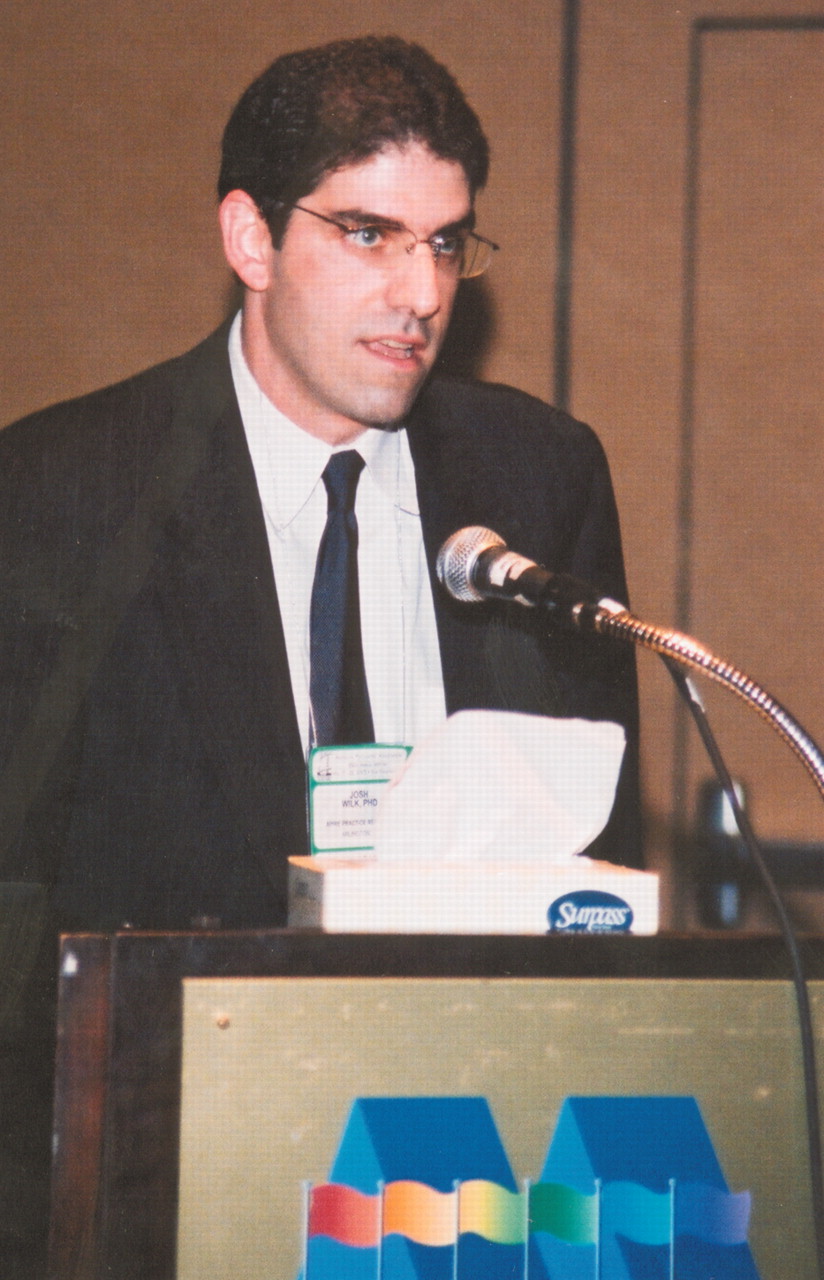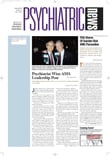Psychiatrists are aging, increasingly in short supply, and spending less time per week with each patient. Joshua Wilk, Ph.D., a research scientist in APA’s Office of Research, presented data at APA’s 2003 annual meeting in San Francisco that support those commonly held views.
The presentation, titled “Current Status of the Psychiatry Workforce in the United States,” was based on studies directed by Darrel A. Regier, M.D., M.P.H., director of APA’s Office of Research and executive director of American Psychiatric Institute for Research and Education (APIRE).
Regier, Wilk, and their colleagues used AMA data from its master file of registered physicians, APIRE data about APA members, and a sample of non-APA members from the AMA masterfile.
The former data represent the universe of psychiatrists, but rely on self-designation. APIRE data provide information not otherwise available, but do not represent the universe of psychiatrists.
There were 40,867 clinically active psychiatrists in the United States in 2000, according to the AMA data. Regier defined “clinically active” as being in practice 35 hours or more a week.
The figure for 2000 represents a 41 percent increase since 1982, but the rate of increase is declining. From 1998 to 2000, the increase was less than 1 percent.
Since the number of people in the general population is growing at a greater rate than that of psychiatrists, the proportionate number of available hours for direct patient care decreased by 4 percent between 1989 and 1998.
Both the AMA and APA data show that the psychiatric workforce is aging. According to the AMA data, only 32 percent of psychiatrists were under the age of 45 in 2000, a reduction from 46 percent in 1990.
More than 60 percent of clinically trained APA members completed their professional degree more than 21 years ago.
The researchers analyzed trends by comparing results from APIRE’s 2002 National Survey of Psychiatric Practice (NSPP) with the 1988-89 Professional Activities Study (PAS).
Researchers mailed a self-administered questionnaire to 2,000 randomly selected psychiatrists listed in the AMA master file of physicians for the NSPP survey. The study sample size was 1,189.
In 1988 researchers mailed a self-administered questionnaire to all APA members (n=34,164) and in 1989 to all known non-APA members who were self-designated psychiatrists in the AMA list of physicians (n=10,091). The study sample size was 19,431.
Psychiatrists are seeing more patients each week and spending less time with each individual patient, according to a comparison between the two surveys.
In 1988-89, the mean number of patients per week each psychiatrist saw was 35. The respective figure for 2002 is 41.
Conversely, PAS data show that the mean number of minutes spent with each patient in 1988-89 was 55, as compared with 34 minutes for patients in 2002.
Wilk told the audience that a psychiatrist can earn approximately 57 percent more money for providing three medication-management visits than for providing one visit for outpatient psychotherapy with medication evaluation.
During the 13-year period, hospitals declined as a primary work setting for psychiatrists from 34 percent to 15 percent. Outpatient clinics/HMOs showed a corresponding rise from 10 percent to 28 percent.
Administrative activities in 2002 claimed an average of 20 percent of a psychiatrist’s time, as compared with 12 percent in 1988-89, with a related decrease in time devoted to patient care from 67 percent to 60 percent.
Wilk said, “There is evidence that we might be reaching our limits in terms of providing access.”
NSPP data show that only 54 percent of psychiatrists are accepting new patients who have insurance subject to managed care restrictions.
Sixty-five percent of psychiatrists are accepting patients covered by Medicare, and 68 percent will accept patients with non-managed care insurance. Seventy-nine percent will accept new self-pay patients. ▪

